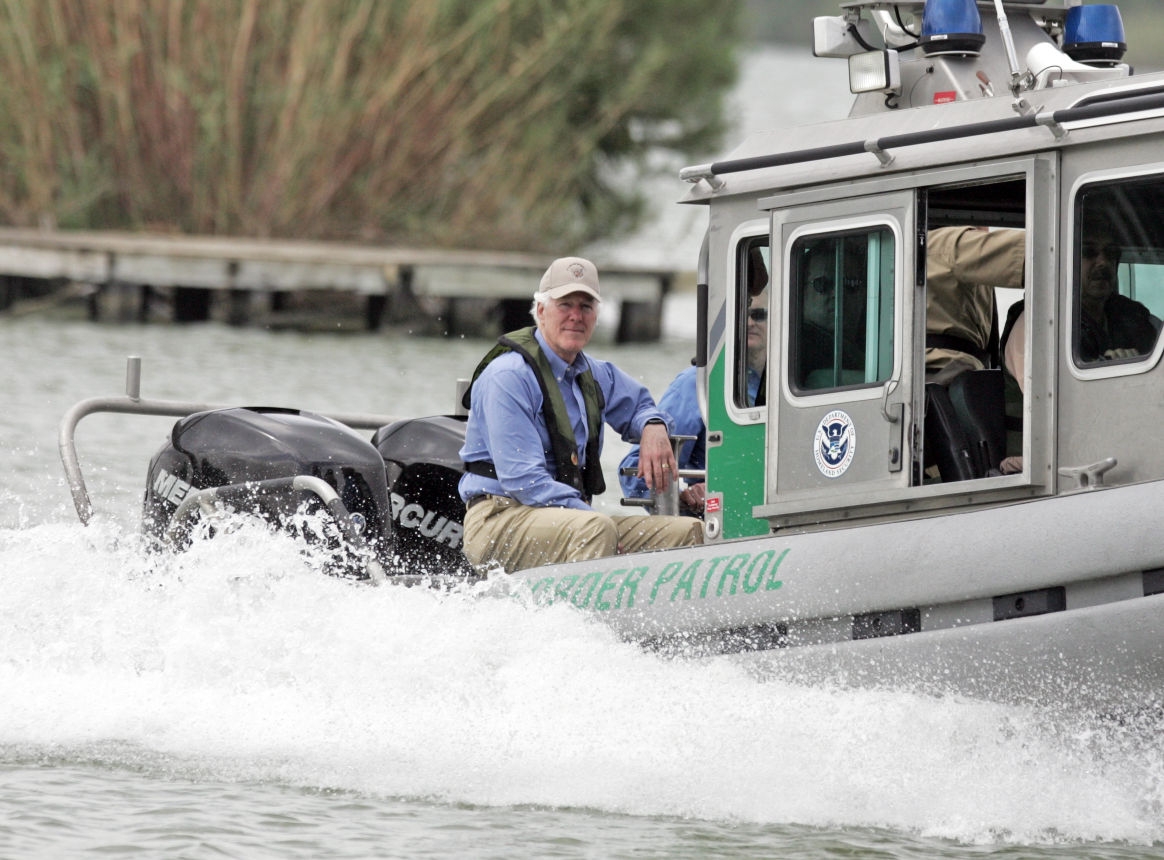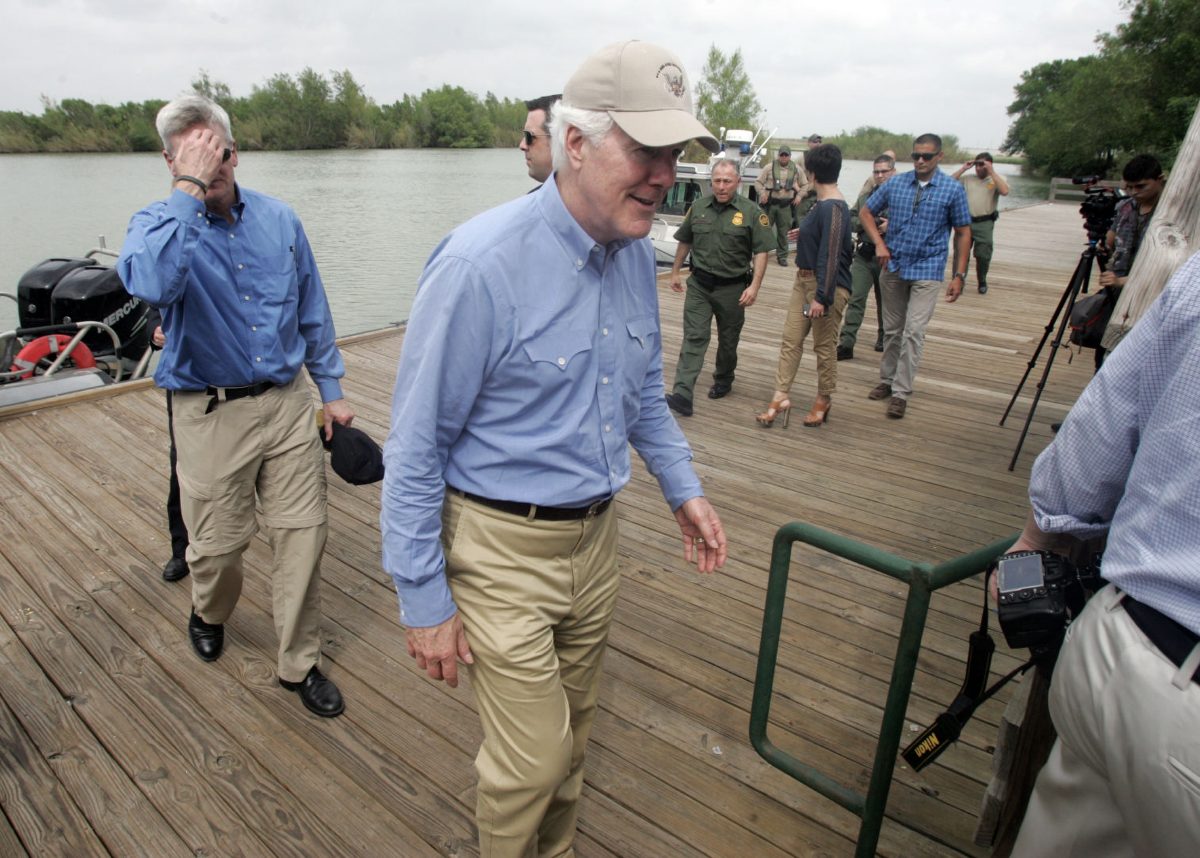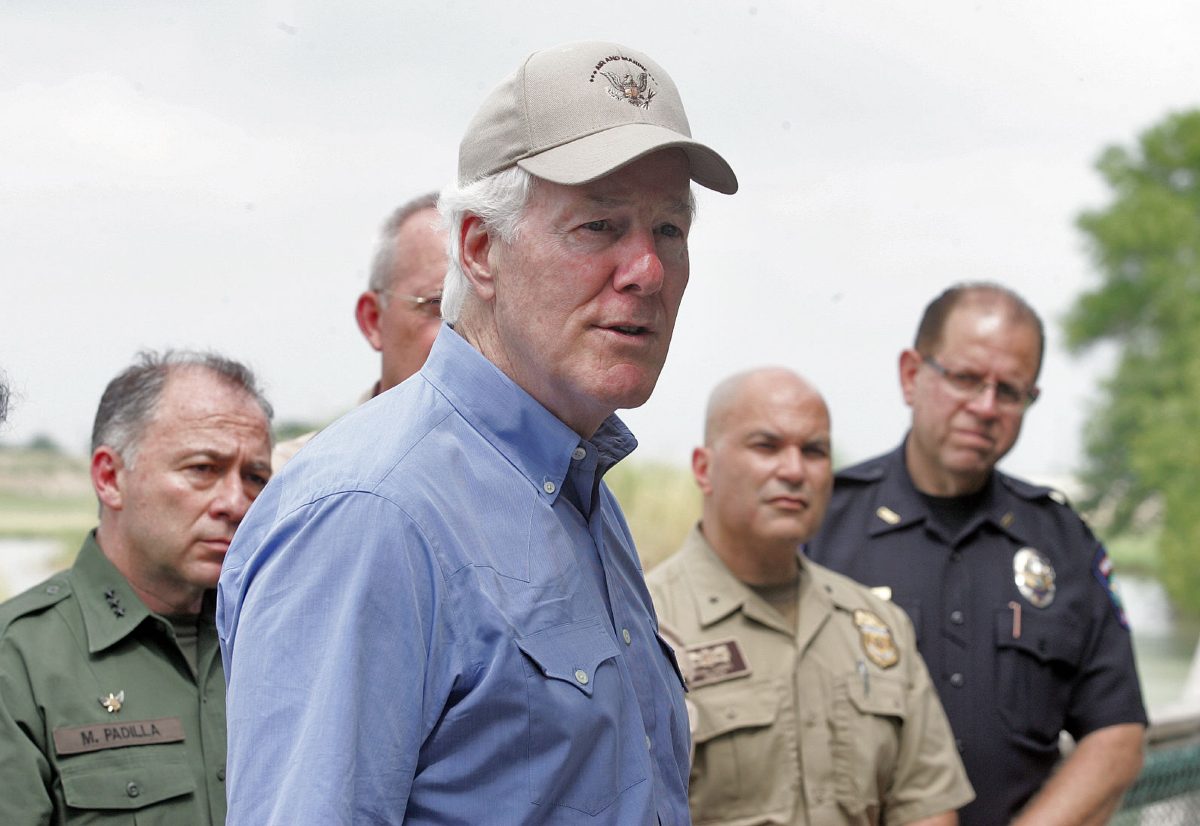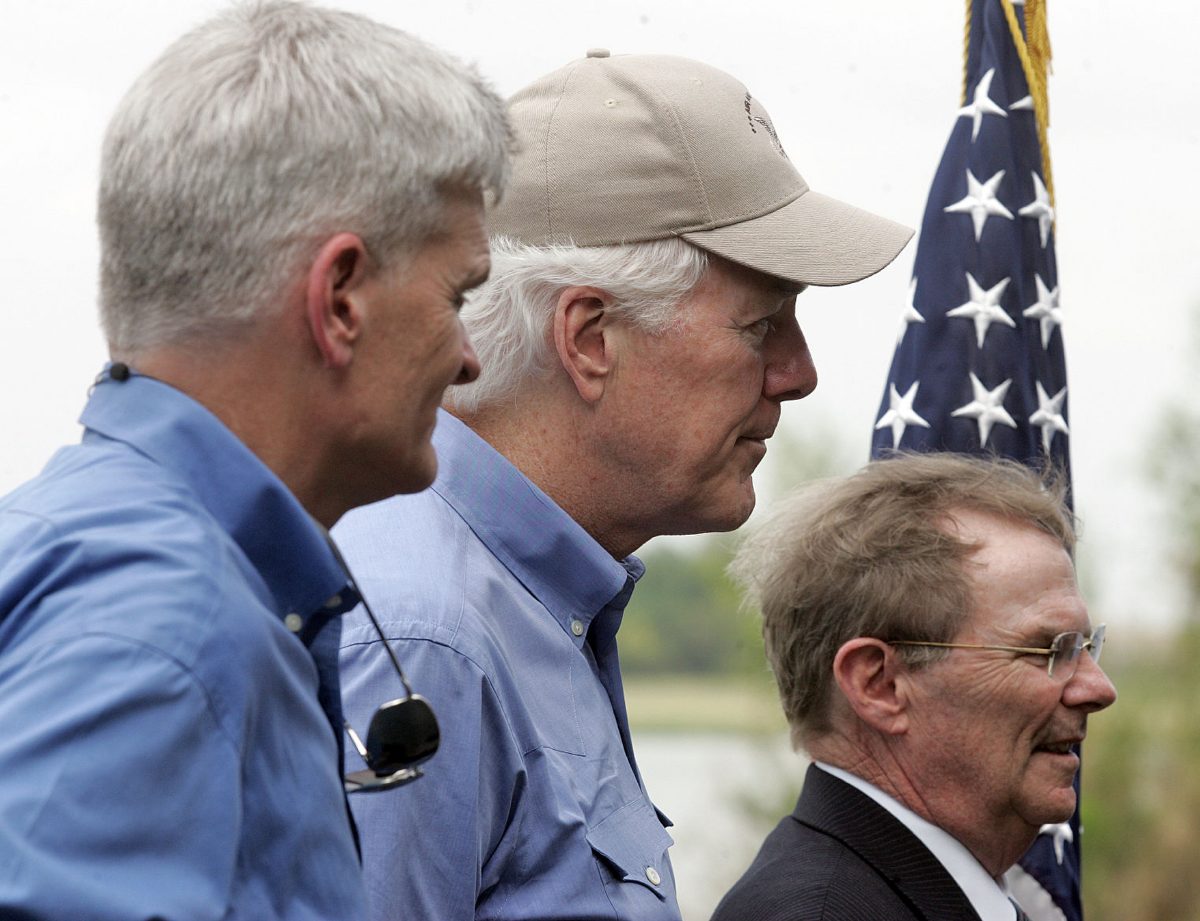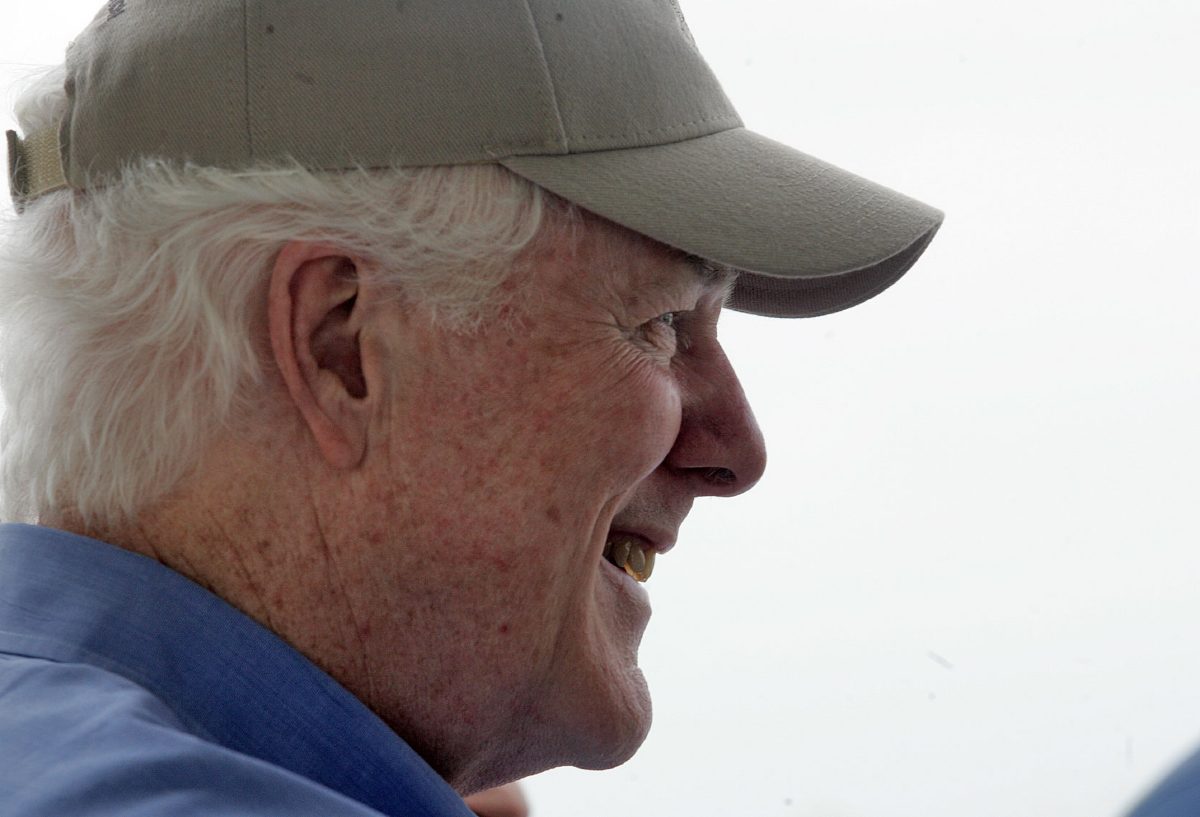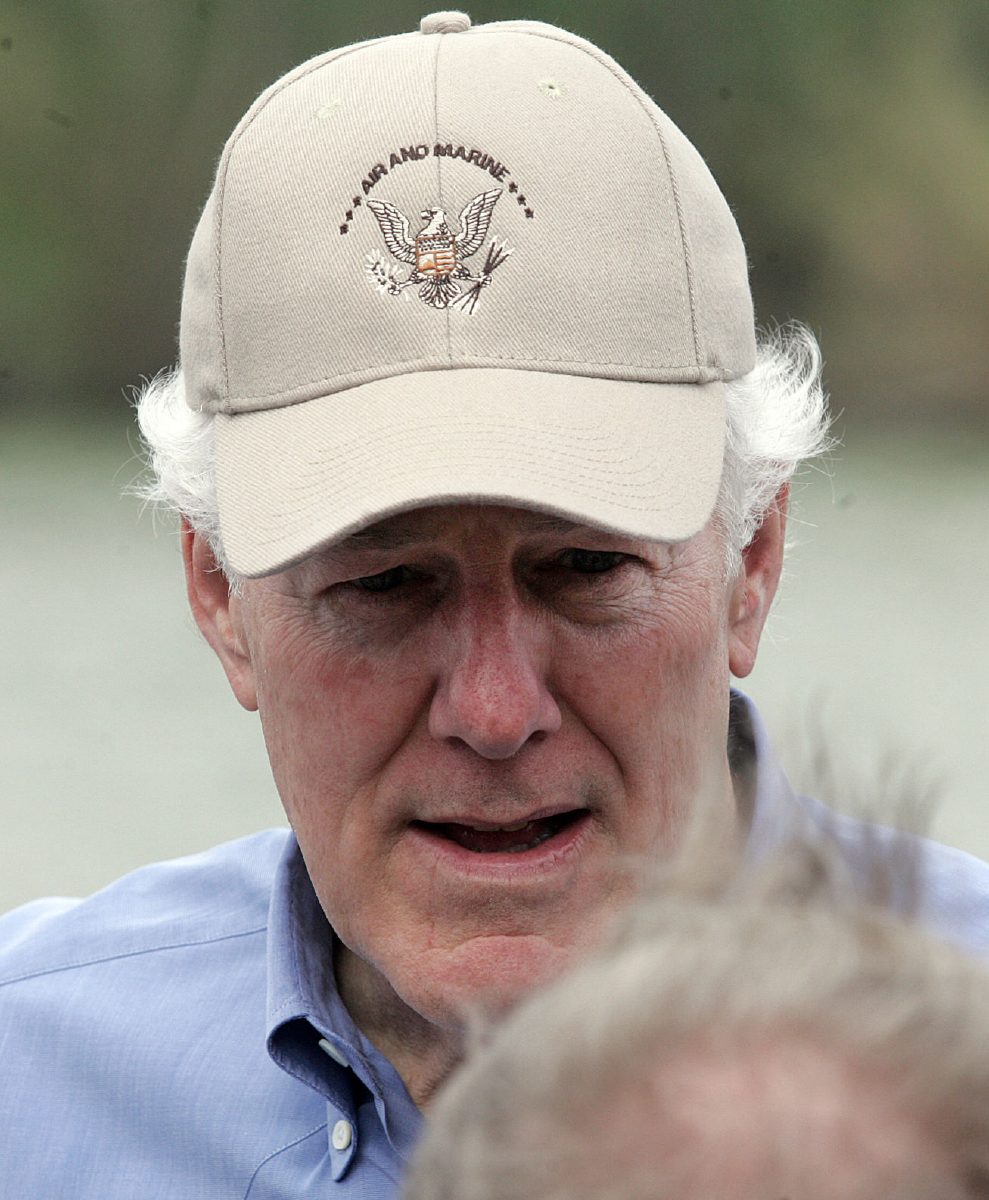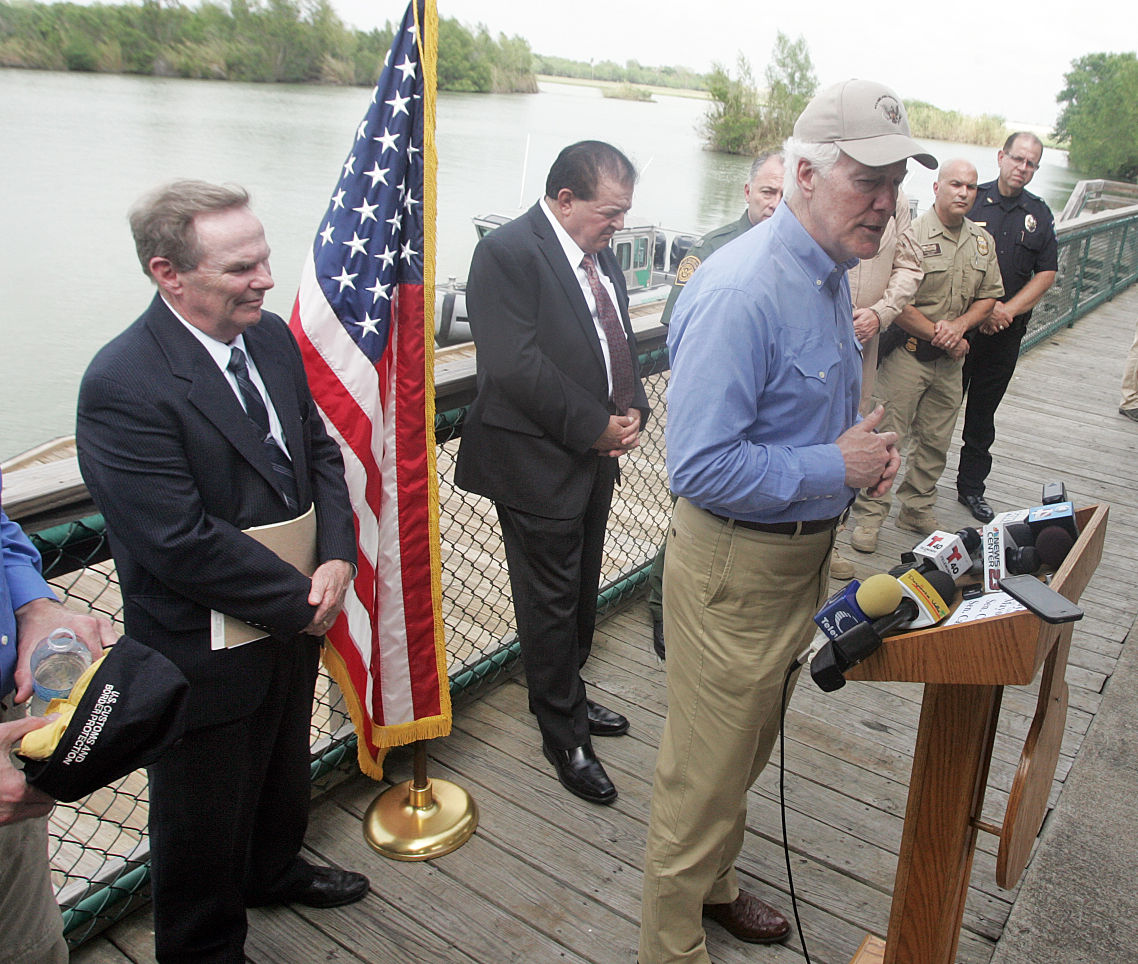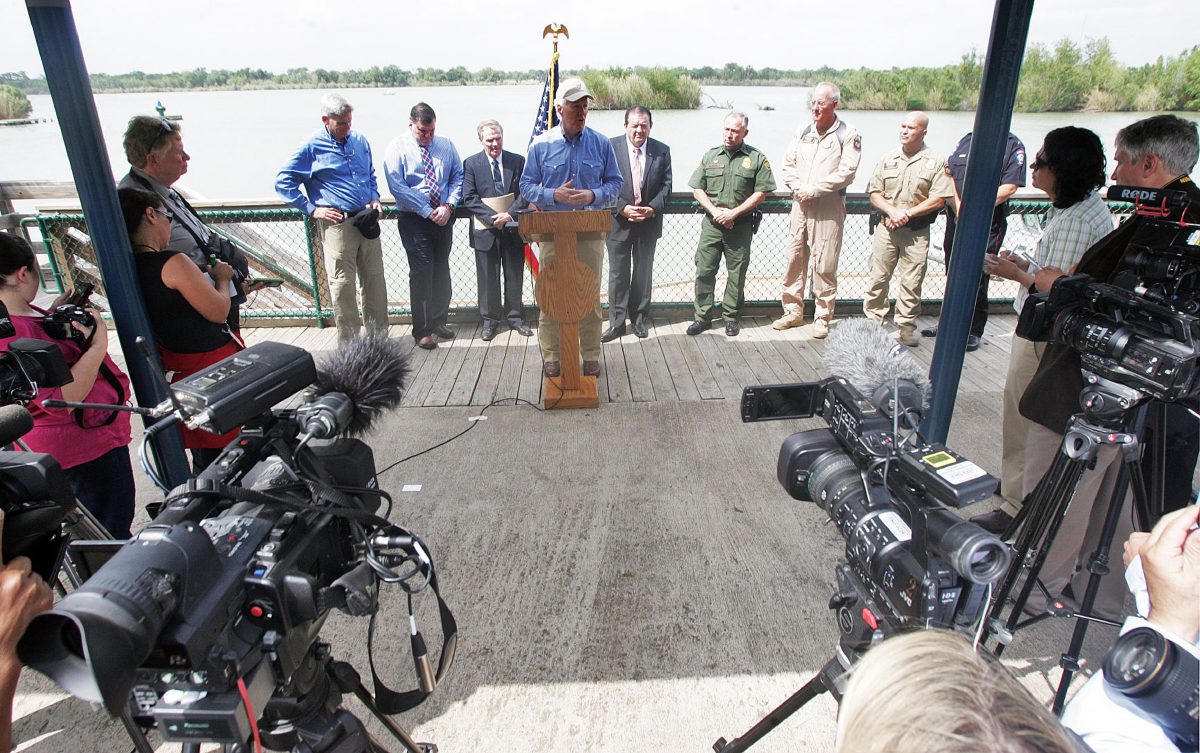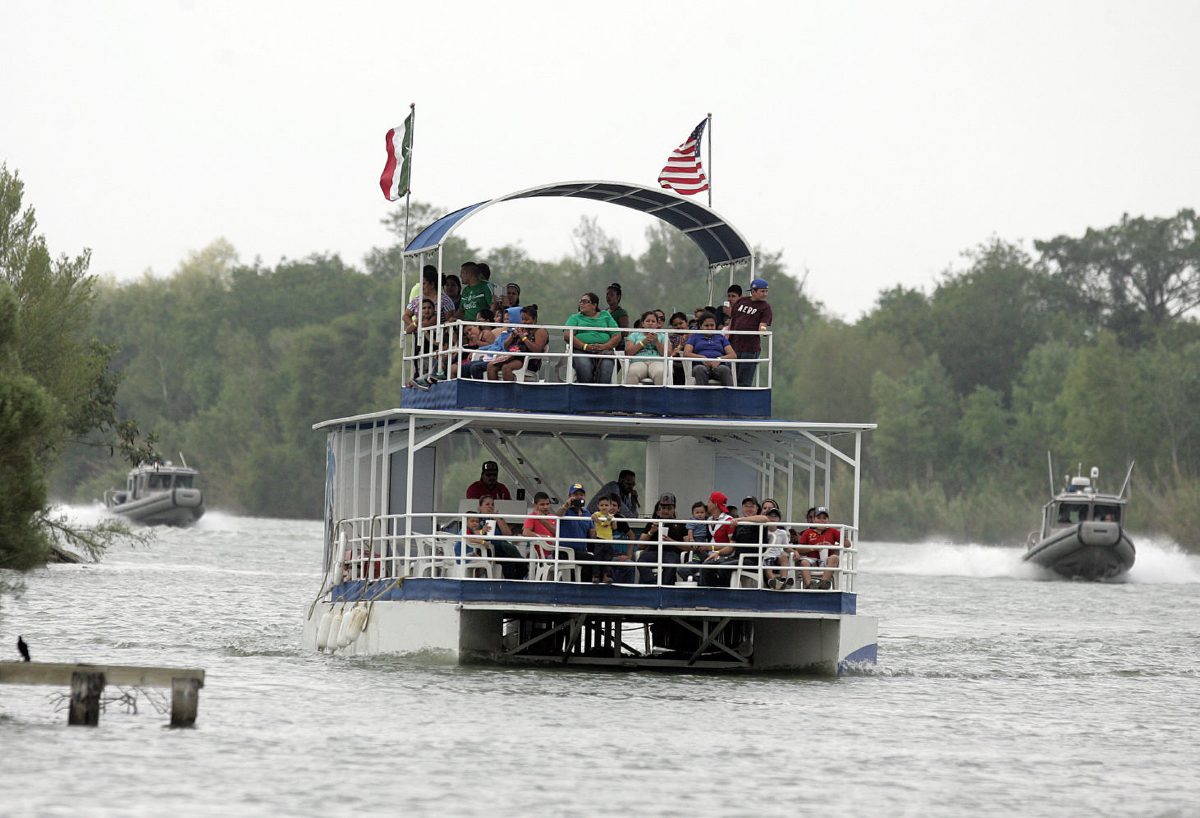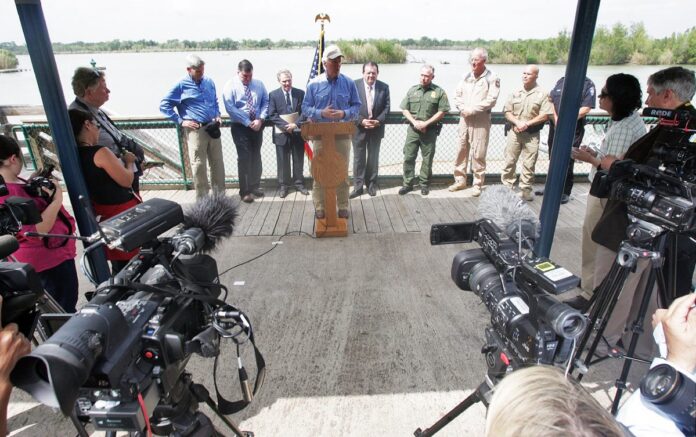
MISSION — A Mexican double-decker tour boat named “Pachamama,” Inca for mother earth, sailed freely past Sen. John Cornyn on Tuesday afternoon during his tour of the Rio Grande with U.S. Customs and Border Protection’s Air and Marine Operations.
Cornyn, accompanied by Sen. Bill Cassidy, R-LA, spent the day touring the Rio Grande Valley learning about border security, trade and economic development issues crucial to both the region and the nation.
Following their tour, a joint press conference was held on the river’s edge along with local, state and federal law enforcement and government officials at Anzalduas Park.
“Sen. Cornyn is really a true friend of the Valley who understands our uniqueness and understands that the river behind us is not just the border. It’s the drinking water for almost 3.2 million people, its irrigation water for tens of thousands of acres of agriculture on both sides of the border. He understands that a safe border is not a closed border,” said McAllen Mayor Jim Darling during the conference.
Cornyn, who last visited the Valley in September, said every time he visits he learns something new and is always welcomed by those standing next to him during Tuesday’s event, including Mission Mayor Norberto “Beto” Salinas, Mayor of Hidalgo Martin Cepeda and U.S. Customs and Border Protection Sector Chief Manuel Padilla.
“When people talk about the border they often forget the advantages of our proximity to Mexico,” Cornyn said speaking over cumbia music blasting from the Mexican tour boat. “Six million jobs in the United States depend on bi-national trade between the U.S. and Mexico.”
“There is so much more than what you hear on the evening news about this wonderful and charming part of the state and great part of the country and it’s important for my colleagues to experience it first hand,” he added.
This was Sen. Cassidy’s first official trip to the Rio Grande Valley and to the U.S.-Mexico border and said he came with certain expectations, but ended up seeing and learning much more. During a tour of the Pharr-Reynosa International Bridge, Cassidy witnessed how CBP agents inspect thousands of commercial trucks every day and process refrigerated goods being imported from all parts of Latin America.
During his short visit with Border Patrol, Cassidy met a 9-year-old girl and her 6-year-old sister from Honduras who said they were fleeing the violence in their country in hopes of finding a better life in the United States.
“There is a multilayer process of having to protect our borders,” Cassidy said. “There is this kind of dual purpose of folks who, on the one hand, have to confront someone who may have a gun, and on the other hand, may have to jump into the Rio Grande to save someone who has been pushed over a boat.”
“This is probably going to be the major impression I come away with — good people working on behalf of our country and sometimes on behalf of those who are not of our country, but showing our country’s values as they work,” he added.

